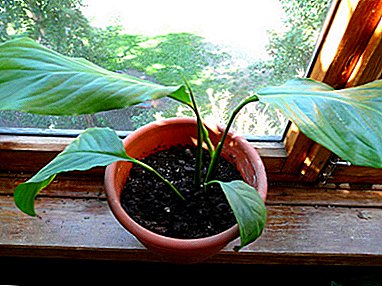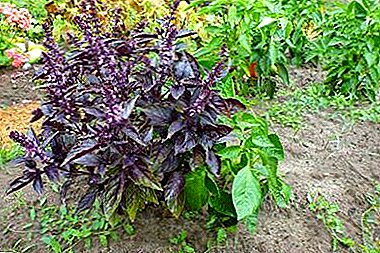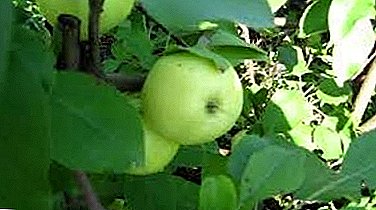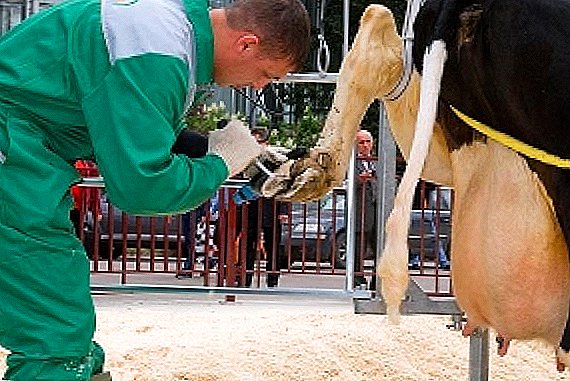
Spathiphyllum is a magnificent, pleasing to the eye, tropical plant. It attracts with delicate flowers, similar to flags, flowers against the background of elongated dark green leaves. The flowers are white, cream and pink. Tall or dwarf, it is always appropriate in the bedroom, nursery or office. It is believed that this shade-loving plant with strong energy is able to fill the air with ozone, which increases efficiency.
Is the flower growing fast?
With proper care in the bundle of leaves of the spathiphyllum, a flower arrow may appear even in winter, although the time for active growth of this plant is April - August. If a month grows 2-3 sheets per bundle, this is considered normal.
Why has growth slowed or stopped?
The ideal living conditions of any plant are natural for the area of his homeland. But the natural conditions of the spathiphyllum are swampy, shady terrain. Therefore, they can not be reproduced completely, but it is desirable to bring closer. For this:

- The light for it must come from the northwest sufficiently so that other plants do not shade it.
- Daily watering and spraying will create enough moisture.
- Need drainage, eliminating stagnant water.
- Fertilizing with phosphate and nitrogen fertilizers is necessary.
- Capacity for spathiphyllum should allow to accommodate the roots. When choosing it, you should take into account that the leaves will not appear until the roots fill all the voids. The diameter of the pot should not be much larger than the diameter of the rhizome.
- The soil is needed slightly acidic, consisting of humus, sand, bone meal in equal parts.
- It is not allowed to thicken.
The growth of the transplanted flower will slow down for a period of adaptation and growth of the roots. If all the conditions are met to ensure the life of the plant, but it does not grow, then the reason for this may be pests:
- Aphid. The removal of eggs from the underside of the leaf with a soap solution, treatment with nicotine sulfate, and insecticides is required.
- Red spider mite. Get rid of it by wiping the leaves with soapy water, a chemical preparation "Actellic".
- Thrips. Mealybug. Removed by extract of tobacco, a solution of alcohol, water and detergent for dishes. As well as drugs "Ascoris", "Aktellik."
Effective simultaneous use of both folk remedies and chemicals.
When to worry?
If, with the onset of warm spring days, the spathiphyllum does not show a desire to bloom and grow with proper care, this serves as a signal for action to save the plant.
Step-by-step instruction: what to do if it does not develop at all or makes it bad?
To resume growth, the flower must be transplanted into a new soil and a larger pot.. The process is as follows:

- Roots carefully removed plants washed under running water.
- Pour a layer of expanded clay (2-3 cm) in a disinfected pot.
- Part of the prepared mixture, in which potash and phosphate fertilizers are applied, is covered with expanded clay.
- Place the roots, then sprinkle them with the remaining soil.
- Watered.
- Place on a place with ambient lighting.
The next watering - after drying the top layer. The plant cleared of old soil, if it is healthy, will soon resume growth.
Prevent re-occurrence
The reasons that the ground has become uninhabitable spathiphyllum are:
- Heavy metals, toxins, get into the ground if housing is adjacent to the highway or harmful enterprises.
- Use of untreated water.
- Lack of drainage.
So that the problem with the cessation of growth is not repeated, should:
- Pour out water from the pan.
- Use drainage.
- Examine the leaves for pests.
- Monitor air humidity.
- Every spring, repot the flower in a container with a slightly larger diameter than the rhizome.
- Do not allow the soil to dry out.
- Do not place the plant in direct sunlight.
- Avoid drafts.
- Filter the water.
- Do not take out the flower for the summer to fresh air, especially in areas with poor ecology.
To Spathiphyllum actively grew and blossomed, you need to maintain a temperature in the room that exceeds 18 degrees (ideal - 22-23 degrees). During the period of rest (in winter) do not annoy the transplant, excessive watering.
It is vital to maintain a constant humidity during operation of the heaters.
During the period of activity (spring-summer) to comply with all the conditions of care, paying particular attention to feeding. This flower, called "female happiness", will justify its name by responding to attention to itself.












